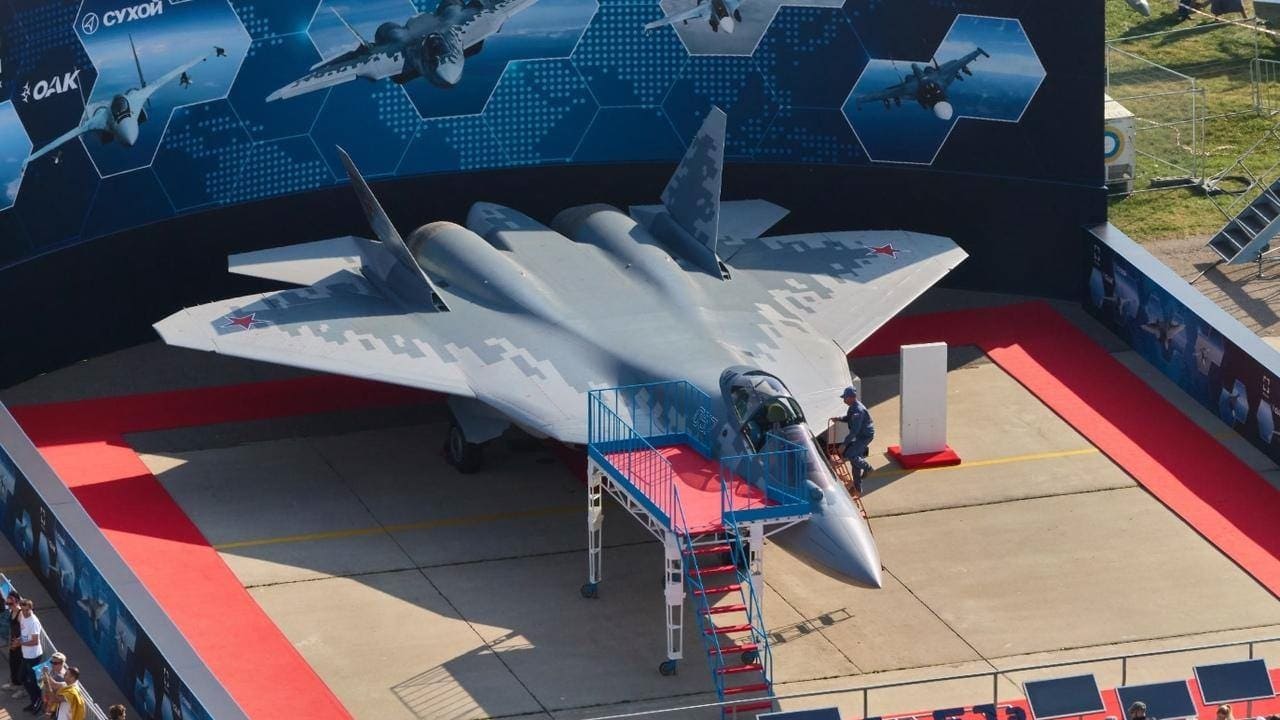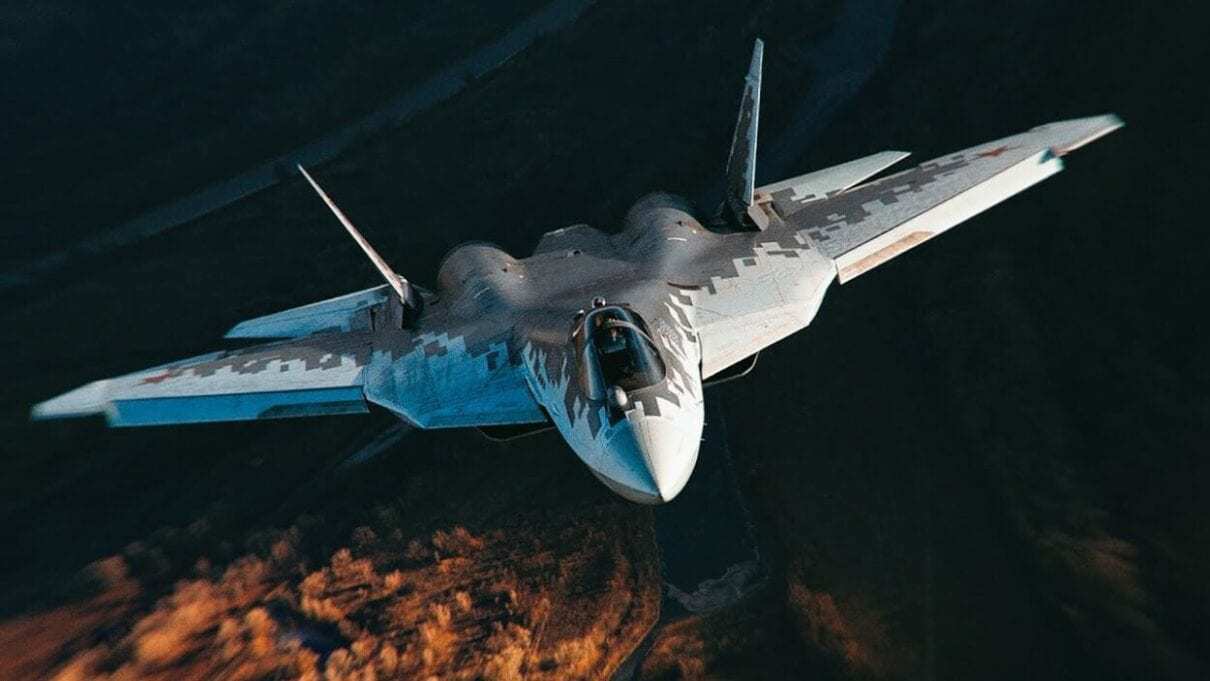Key Points: Images have surfaced of a Russian Sukhoi Su-57 Felon equipped with a new thrust-vectoring flat nozzle, reportedly developed for Russia’s S-70 “Okhotnik” UAV. This design could enhance the Su-57’s low-observability and maneuverability.
-The updated nozzle, created largely through 3D printing, addresses limitations of the older AL-41F1 engines, potentially reducing thrust loss and improving performance.
-Although Russia claims the Su-57 rivals the F-22 and F-35, its operational impact has been minimal due to limited production, with only around two dozen units delivered.
-Upgrading the fleet with advanced engines may improve capabilities but highlights ongoing challenges in the program.
Russia’s Su-57 Felon Gets a Stealth Upgrade With New Flat Nozzle
Images circulating online showed a Russian fifth-generation multirole fighter fitted with a new thrust-vectoring nozzle, which reportedly could improve the aircraft’s low-observability.
The Ukrainian-based Militarnyi cited a short video (see above) from Russian TV that appeared to show an early prototype Sukhoi Su-57 (NATO reporting name Felon) – designated “T-052” – engaged in tests with a new type of nozzle.
It was reportedly developed for use with Russia’s S-70 “Okhotnik” unmanned aerial vehicle (UAV).
While the Su-57 wasn’t designed with flat nozzles, it has been seen on various advanced engines, including the Pratt & Whitney F119 engines used on the Lockheed Martin F-22 Raptor.
The thrust vectoring is meant to improve maneuverability at low speeds.
According to The War Zone, the aircraft is the second flying prototype of the Su-57 program and “was subsequently used to test the improved AL-51F-1 (also known as izdeliye 30) turbofan, which was first flown in December 2017 — with just one of the engines installed in the aircraft, alongside one of the original AL-41F-1s.”

Su-57. Image Credit: Creative Commons.
Providing More Power to the Su-57 Felon
The original NPO Saturn AL-41F1 engines – also known as the Izdeliye 117 – had been derived from the engines for the Su-35 (NATO reporting name Flanker-E). While not meant as the permanent engine for the Su-57, it was considered underpowered, which explains why a search may be underway to find an improvement.
The AL-51F was able to increase thrust while featuring fewer components. It had been equipped with normal serrated circular nozzles, which may have caused 6-8% thrust loss. TheAviationist.com also cited images from the United Engine Corporation, which stated that 90% of the nozzle demonstrator’s parts had been created through additive manufacturing – aka 3D printing – although the exact type of materials was unclear.
Even as efforts are underway to improve the capabilities of the Su-57, some Russian aviation experts have suggested it already exceeds those of even the United States Air Force’s F-22 Raptor and F-35 Lightning II.
Designed to destroy all types of air, ground, and surface targets, the Su-57 has a supersonic cruising speed, in-fuselage armament, and radio absorption coating (stealth technology), as well as the latest complex of onboard equipment. Development of the Su-57 began in 2002 at the Sukhoi Design Bureau and the Russian United Aircraft Corporation (UAC) as part of the Russian Air Force’s PAK FA fifth-generation fighter jet program.

Su-57 Fighter. Youtube Screenshot.
The Su-57 has largely been absent from the fighting in the ongoing war in Ukraine and was reportedly only tested for the first time in actual combat operations in Syria in 2018, and even then its performance could hardly be considered exemplary.
One issue is that Moscow simply doesn’t have significant numbers of Felon aircraft to deploy. The Russian Aerospace Forces have only received around two dozen of the fifth-generation fighters to date.
That could make upgrading the fleet with new engines a bit easier – and perhaps that is what Moscow is now doing.
Author Experience and Expertise: Peter Suciu
Peter Suciu is a Senior Editor focusing on defense issues for 19FortyFive. He has contributed to more than four dozen magazines, newspapers, and websites with over 3,500 published pieces over a twenty-year career in journalism. He regularly writes about military hardware, firearms history, cybersecurity, politics, and international affairs. Peter is also a Contributing Writer for Forbes and Clearance Jobs. You can follow him on X: @PeterSuciu – and on Bluesky: @petersuciu.bsky.social.

